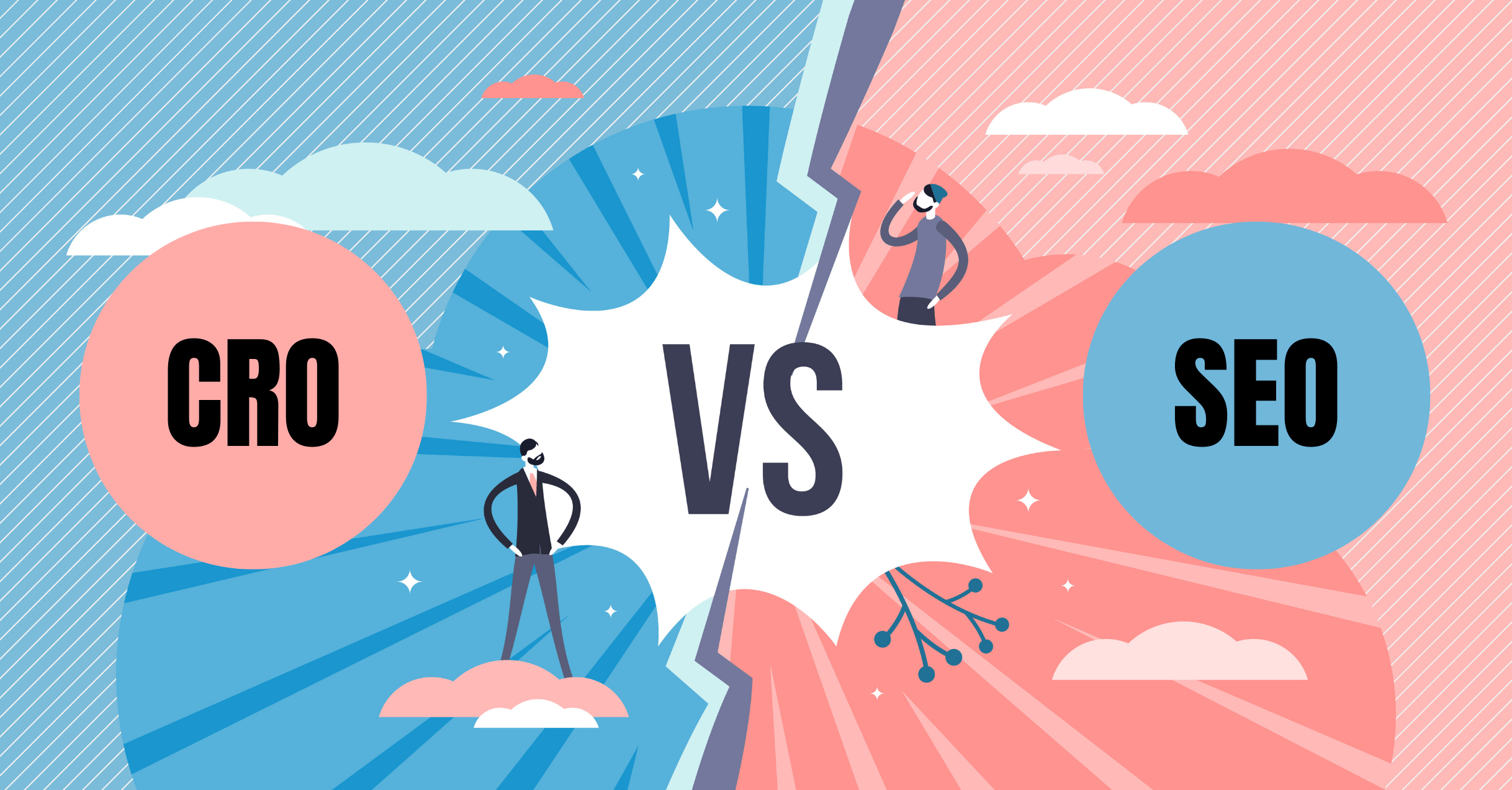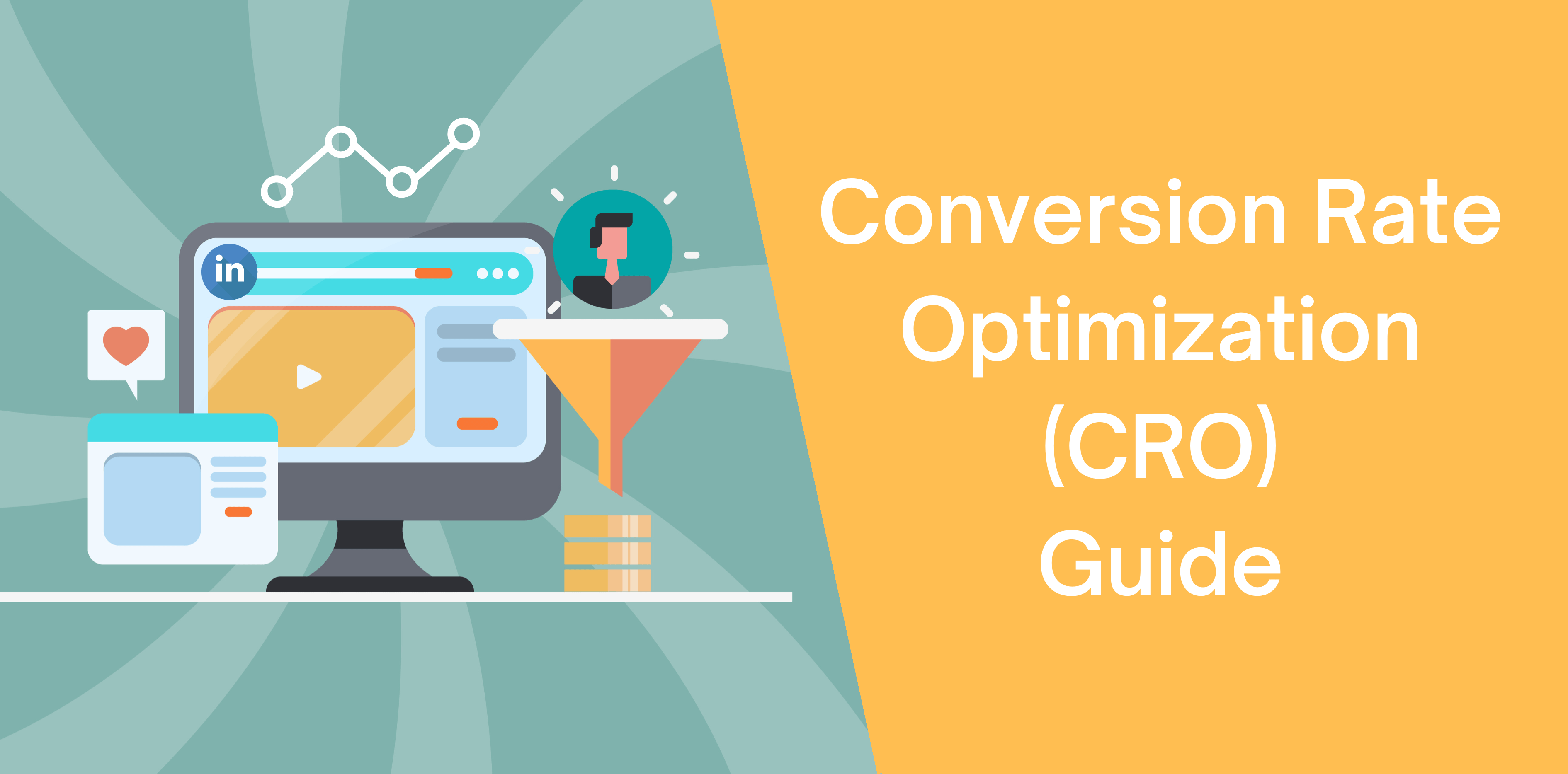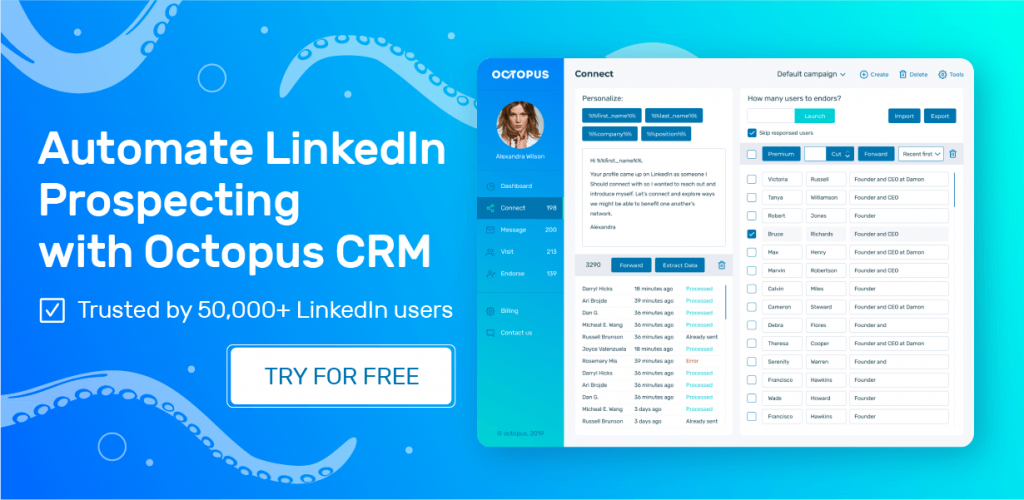Say goodbye to overused best practices and quick hacks and say hello to conversion rate optimization. If your goal is to convert, your best bet is to understand your visitors and customers and give them what they need.
If you’re new to CRO, worry not. In this blog, we’ve included a comprehensive guide to conversion rate optimization. Here, we’ll cover:
- What conversion rate, conversion, and conversion rate is
- The top conversion rate strategies to convert visitors into loyal customers
- The difference between conversion rate optimization (CRO) and search engine optimization (SEO)
- Tips and tricks to optimize conversion rate
Let’s get started!
What is a Conversion Rate?
Conversion rate refers to the percentage of viewers that visit your website and convert out of the total number of visitors.
A high conversion rate indicates a healthy website, successful marketing, and attractive web design. Essentially, it shows that people want your products and services. However, ensuring optimal conversion rates is easier said than done. If you need help, consider hiring a UX Agency.
How Do I Know if I Have a Good Conversion Rate?
Conversion rates may vary from industry to industry and business model. However, a CRO above 10% indicates a successful website.
What is a Conversion?
Conversions occur when a visitor clicks on your website and completes your desired goal (here: conversion).
Depending on your website and business goals, conversions may be of various types:
- Getting viewers to click on an email
- Encouraging your target audience to complete a form
- Enticing customers with an offer that prompts them to click on your landing page
- Getting viewers to download a free ebook or pdf
- Captivating viewers and encouraging them to make a purchase
Why Do Conversions Matter?
KPIs associated with conversions are critical for assessing your marketing campaign’s performance, effectiveness, and success. Without identifying the number of users who convert, marketers cannot determine ROAS.
Furthermore, when establishing business KPIs, it’s vital to view your conversions and ensure they resonate with your company goals.
What is Conversion Rate Optimization?
Conversion Rate Optimization (CRO) refers to using strategies and best practices to increase the percentage of users who execute the desired action on your website. For instance, the desired action may be purchasing a product, filling out a form, clicking on a link in an email, downloading a free ebook, or choosing to ‘add to cart.’
CRO involves identifying and understanding how users engage and move on your website, their actions, and what blocks them from completing the desired action. In addition, CRO encourages businesses to add elements on their website/app that they can validate and improve through A/B testing or multivariate testing.
How to Calculate Conversion Rate?
Calculating your conversion rate is critical to identifying your successful marketing strategy. Here’s how you calculate your conversion rate:
- Divide the number of conversions (i.e., the desired action) by the total number of visitors
- Multiply the achieved result by 100
- You’ll receive your CR rate!
Example
Let’s consider that you generate 35 sales from 50 leads. Here are the calculations:
® 35/50= 0.7
® 0.7 x 100
® 70%
Thus, your conversion rate will be 70%.
Why Invest in Conversion Rate Optimization?
CRO is critical to the success of any business. By focusing on CRO, Moz increased its revenue by $1 million within a year, New Balance doubled in-store sales, and Walmart’s conversion rose by 20%.
Sounds incredible, right? Let’s discuss the top ways CROs can help your business:
Helps You Understand Your Customers Better
With online shopping cart abandonment rates reaching 68.82%, increasing abandonment rates is becoming a top challenge for e-commerce retailers. Complicated checkouts, missing information, security concerns, ambiguous payment methods, and other factors increase abandonment rates.
CROs offer businesses invaluable insights to better understand their visitor’s needs and pain points. With C.R.O., you can take a holistic view of everything customers do before converting. It includes:
- What encourages visitors to click on your website
- Why and where users abandon your site
- What persuades visitors to take action
As a result, users can create a website design and integrate elements that improve the overall customer experience.
Discover Better and Free Customers
Research reveals that customer acquisition costs up to 7 times more than selling to an existing customer. Also, the probability of selling to a new customer is 5 to 20%, whereas selling to a loyal customer costs 60 – 70%. Unfortunately, the acquisition costs have increased by a whopping 60%, making it more appealing for brands to sell to existing customers.
Customer rate optimization allows companies to attract more customers by leveraging website traffic. As a result, businesses can boost conversions while saving costs.
Reduce Bounce Rate
Your conversion rate improves when fewer visitors bounce off and more progress through conversion funnels on the site. You want visitors to visit your website on multiple pages and consume your content, thus reducing your bounce rate and improving your conversions.
Here are the top four ways to reduce your bounce rate for conversion rate optimization:
- Improve Readability – Long paragraphs filled with jargon can turn off readers. So, try using shorter paragraphs, bullet points, and headers to make it easy to read and fun
- Avoid Pop-ups – Pop-ups are annoying and immediately reduce the customer’s on-page experience. Remove pop-ups from your page to reduce bounce rates
- Optimize Load Time – Over 47% of users expect web pages to load within two seconds. Thus, the quicker your pages load, the more likely the visitor is to stick around
- Include a Clear and Attention-Grabbing Call-to-Action – A clear and attention-grabbing call to action will invoke customers to follow your desired action
These tips can help reduce bounce rates while driving traffic to your landing pages.
Why is Conversion Rate Optimization Important?
Now, let’s discuss the top reasons conversion rate optimization is essential:
- It helps you understand your customer better
- It attracts more viewers
- It boosts your website profits
- It offers you a competitive advantage
- It allows you to leverage your website traffic to boost conversion
- It lowers your customer acquisition cost
- It enhances your brand perception
- It boosts your search engine ranking
- It improves your customer’s lifetime value
- It increases your SEO efforts
5 Steps of Conversion Rate Optimization

Here’s the thing: randomly tweaking your websites and landing pages without creating a CRO strategy is like walking in the night without a flashlight. Here are the five steps to improving your CRO:
Step # 1: Researching and Data Gathering
Often marketers copy-paste the most popular CRO strategies but feel disappointed when it doesn’t work for them. Why? Because what promises success for other businesses might not work for you.
And that’s why research and data gathering is crucial to improving your conversion rate optimization on your website. That way, you can identify how and why visitors react to your website. Instead of following your gut instincts, making data-backed decisions is best.
Here are two significant ways of researching and data gathering:
Quantitative Data Analysis
Quantitative data analysis is instrumental in understanding how visitors engage with your website. By leveraging tools like Adobe Analytics, Google Analytics, etc., users can gather the following data:
- Click-through-rate (CTR)
- Bounce Rate
- Demography
- Time on Site
- Traffic Source
- User’s Device and Browser Information
Qualitative Data Analysis
Unlike quantitative data analysis, qualitative is more subjective. It helps you understand why users are behaving in a particular way.
Here’s how you can collate qualitative data:
- Polls
- On-site Surveys
- User Interviews
- Satisfaction Surveys
Step # 2: Hypothesis
After collecting quantitative and qualitative data, it’s time to form a hypothesis. So, what does a hypothesis look like from the CRO perspective? Here’s an example:
Adding buttons that add urgency, such as “Only a few left in stock,” “Sold Out,” or “Add to Cart” buttons.
Use your hypothesis to implement changes on your website. But to ensure your hypothesis guarantees success, consider A/B and multivariate testing.
Step # 3: Learn to Prioritize
Prioritizing your hypotheses is key to focusing on the most critical problems on your site. If you’re struggling with this step, try these prioritization frameworks:
PIE Framework
The PIE framework focuses on three factors:
- Potential – You leverage your analytics data, customer feedback, and user scenarios to identify the worst-performing pages
- Importance – After figuring out your worst performers, it’s time to pinpoint the essential pages
- Ease – Lastly, you need to consider the ease of carrying out tests for each page
PXL Framework
The PXL framework requires users to assess value and ease objectively. Therefore, it asks yes and no questions instead of rating pages out of 10.
Here’s what the PXL framework asks:
- Is the change above the fold, i.e., in the upper half of the webpage?
- Are the changes visible within 5 seconds?
- Does the test run on a high traffic or high volume page?
- Does it add or remove information from your website?
Step # 4: Implementing and Testing
After finishing the data, hypothesis, and prioritization, it’s time to test and implement. Here are the top three ways you can implement and test data:
A/B Testing
A/B testing is a simple yet effective research methodology used to evaluate user experience between two variants: A and B. The option is ideal for testing minor designs and layout tweaks.
Multivariate Testing
Unlike A/B testing, multivariate testing is used to test multiple changes on a page or test various combinations.
Split Testing
Users leverage split testing or split URL testing to evaluate complex changes, such as comparing page variations with separate URLs.
Step # 5: Tracking and Reviewing
Once you receive your results, you’ll learn whether your hypothesis was correct. Typically, marketers take one of the following steps:
- If the test results are positive, they start implementing the changes
- If you receive negative results, they go back to step two and form a new hypotheses
Whether your hypothesis was correct or wrong, it’s essential to continue digging deeper. If it’s accurate, compare the cost of implementation to the revenue it will generate. On the other hand, look for loopholes in a faulty hypothesis.
Bonus Step: Leveraging Customer Reviews
Including customer reviews on your site is an incredible way of improving CRO. That way, you can increase conversions and user engagement. Moreover, integrating customer success stories can help foster trust and build deep connections.
CRO vs. SEO

Search Engine Optimization entails boosting your website’s ranking in organic results. SEO strategies can help sites rank at the top of search results, thus allowing more people to find your website and make a purchase. On the contrary, Conversion Rate Optimization includes continuously testing different website elements to boost conversions, leads, and sales for your organization.
The primary difference between SEO and CRO is that the former focuses on boosting website traffic, whereas the latter aims to convert that traffic by encouraging viewers to take action.
Conversion Rate Optimization Best Practices
Now, let’s discuss the top ways you can improve your conversion rate to boost customer retention and nurture your existing customers:
Creating Text-Based CTAs in Your Blogs
Despite being a best practice, CTAs often fail to entice visitors to take the desired action. Why does it happen? Two words: banner blindness.
Banner blindness is (unfortunately) a natural and undesired phenomenon where people get accustomed to ignoring banner-like information. The lack of attention combined with the fact that most visitors don’t read to the bottom means no more than a few customers see- and even fewer- and follow your CTA.
The best way to accommodate your visitor’s reading style is by creating text-based CTAs. HubSpot’s insightful test revealed that end-of-post banners contributed to a measly 6% leads, whereas anchor-text CTA’s generated 93% leads.
Getting Rid of Unnecessary Form Fields
Picture this: you come across an online form and intend to fill it. But when you click on it, you notice too many required fields. The result: you get scared and close the tab.
That’s what’s destroying your conversion rate. So, remove unnecessary form fields and leave those essential to achieving your goal. We recommend A/B or split testing form fields within signup forms to optimize your website.
A/B Testing (And Then Testing Again)!
A/B testing is an experiment where users test two versions of a piece of content on their target audience. Whether you want to test your website’s layout or your CTA button’s effectiveness, this research method allows you to learn what works for your company.
With A/B testing, businesses can increase user engagement, boost conversion rates, reduce bounce rates, and create quality content. Here are several elements you should consider in A/B testing:
- Landing page copy, product page copies, etc.
- Website’s format and layout
- Pop-ups on your website
- Images and photos
- CTA buttons
- Social buttons
A/B testing reveals how existing customers and viewers engage with your website while progressing through the sales funnel. So, you can use this data to tweak your pages and improve customer experience, ultimately boosting sales.
Add Testimonials, Reviews, and Logos
The fact is that no one wants to be the first person to try a new product and service. So, providing testimonials and reviews from past customers is the perfect way of giving them peace of mind.
For your homepage, consider adding a series of logos that represent the brands you’ve previously worked with. As a result, you can instantly build trust with a new visitor.
Never Copy Your Competitors
It’s common practice to check competitors’ websites and analyze their web design. What are they doing differently? Are they doing something better than us? Something we should be doing?
Web designs are emotional- we instantly know whether we like something or not. Your primary goal is to get customers to complete the task they clicked on your website for. But when you copy your competitors, you won’t be able to identify whether your solution works for your target audience.
Not just this, but you’ll have other unanswered questions, such as is this web design working for my viewers? How did my competitor come up with this idea?
Instead of copying your competitor, analyze your data to pinpoint areas of improvement and brainstorm ideas, and test them. However, this doesn’t mean you can’t use a concept that does already out there; just remember to add a personal touch to it.
Eliminate Distractions
A website that pulls the visitors in too many directions causes confusion and scares them away. So, your landing page needs to be clear, concise, and catchy.
Include only what your visitors need to know; remove it if it’s not critical. Typically, marketers add the following:
- Attention-grabbing headline
- Relevant subheadings
- Catchy and informative benefits and features
- Testimonials and reviews to foster trust
- Visuals that support the context
You might include several other elements, like chatbots, social proof, and video. But eliminate all distractions to ensure your visitors see your offer.
Add a Third-Party Signup Service
Alternative signup options have become quite popular owing to the convenience they offer. That way, viewers don’t need to create a new profile. Instead, they can log in using their Google, Facebook, Twitter, or another account. It also eliminates the hassle of signing up.
How to Optimize Conversion Rate
Here’s a rundown of the ten steps for improving your conversion rate optimization:
- Make initial steps simple
- Implementing a strong CMS
- Leverage customer reviews, testimonials, and success stories
- Strengthen your CTA copy and make it more compelling
- Test, test, test (and test again)
- Add a countdown timer to create urgency
- Add a point of purchase upsell
- Make it your secret weapon
- Create abandoned cart email campaigns
- Eliminate unnecessary distractions
Conclusion
The best way of improving your CRO is to take a step back and look at the bigger picture. Put yourself in your buyer’s shoes and consider whether you would purchase your product/service.
If your answer isn’t 100% positive, follow the best practices we discussed. Most importantly, keep these three tips in mind when improving CRO:
- Experiment with CRO strategies to discover the best one for your business
- A/B, multivariate, and split test your strategies before implementation
- Leverage the PIE or PXL framework to optimize your strategy

